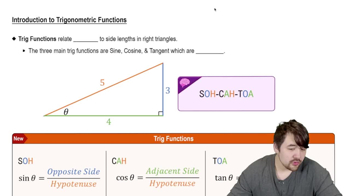Table of contents
- 0. Functions7h 52m
- Introduction to Functions16m
- Piecewise Functions10m
- Properties of Functions9m
- Common Functions1h 8m
- Transformations5m
- Combining Functions27m
- Exponent rules32m
- Exponential Functions28m
- Logarithmic Functions24m
- Properties of Logarithms34m
- Exponential & Logarithmic Equations35m
- Introduction to Trigonometric Functions38m
- Graphs of Trigonometric Functions44m
- Trigonometric Identities47m
- Inverse Trigonometric Functions48m
- 1. Limits and Continuity2h 2m
- 2. Intro to Derivatives1h 33m
- 3. Techniques of Differentiation3h 18m
- 4. Applications of Derivatives2h 38m
- 5. Graphical Applications of Derivatives6h 2m
- 6. Derivatives of Inverse, Exponential, & Logarithmic Functions2h 37m
- 7. Antiderivatives & Indefinite Integrals1h 26m
- 8. Definite Integrals4h 44m
- 9. Graphical Applications of Integrals2h 27m
- 10. Physics Applications of Integrals 2h 22m
3. Techniques of Differentiation
The Chain Rule
Problem 96c
Textbook Question
Composition containing sin x Suppose f is differentiable on [−2,2] with f′(0)=3 and f′(1)=5. Let g(x)=f(sin x). Evaluate the following expressions.
c. g'(π)
 Verified step by step guidance
Verified step by step guidance1
Step 1: Recognize that g(x) is a composition of functions, where g(x) = f(sin x). To find g'(x), we need to use the chain rule for differentiation.
Step 2: The chain rule states that if you have a composition of functions h(x) = f(u(x)), then the derivative h'(x) = f'(u(x)) * u'(x).
Step 3: In this problem, u(x) = sin x, so u'(x) = cos x. Therefore, g'(x) = f'(sin x) * cos x.
Step 4: We need to evaluate g'(π). First, find sin(π), which is 0. So, g'(π) = f'(sin(π)) * cos(π).
Step 5: Substitute the known values: f'(0) = 3 and cos(π) = -1. Therefore, g'(π) = f'(0) * (-1).
 Verified video answer for a similar problem:
Verified video answer for a similar problem:This video solution was recommended by our tutors as helpful for the problem above
Video duration:
3mPlay a video:
Was this helpful?
Key Concepts
Here are the essential concepts you must grasp in order to answer the question correctly.
Chain Rule
The Chain Rule is a fundamental principle in calculus used to differentiate composite functions. It states that if you have a function g(x) = f(h(x)), the derivative g'(x) can be found by multiplying the derivative of the outer function f with the derivative of the inner function h. This rule is essential for evaluating derivatives of functions that are composed of other functions.
Recommended video:

Intro to the Chain Rule
Trigonometric Functions
Trigonometric functions, such as sine and cosine, are periodic functions that relate angles to ratios of sides in right triangles. In this context, sin(x) is used as the inner function in the composition g(x) = f(sin x). Understanding the behavior and derivatives of these functions is crucial for evaluating expressions involving them, especially at specific points like π.
Recommended video:

Introduction to Trigonometric Functions
Differentiability
A function is said to be differentiable at a point if it has a defined derivative there, which implies that the function is smooth and continuous at that point. In this problem, knowing that f is differentiable on the interval [−2,2] allows us to apply the Chain Rule confidently, as we can use the given derivatives f′(0) and f′(1) to find g'(π) through the composition of functions.
Recommended video:

Finding Differentials

 5:02m
5:02mWatch next
Master Intro to the Chain Rule with a bite sized video explanation from Callie
Start learningRelated Videos
Related Practice






